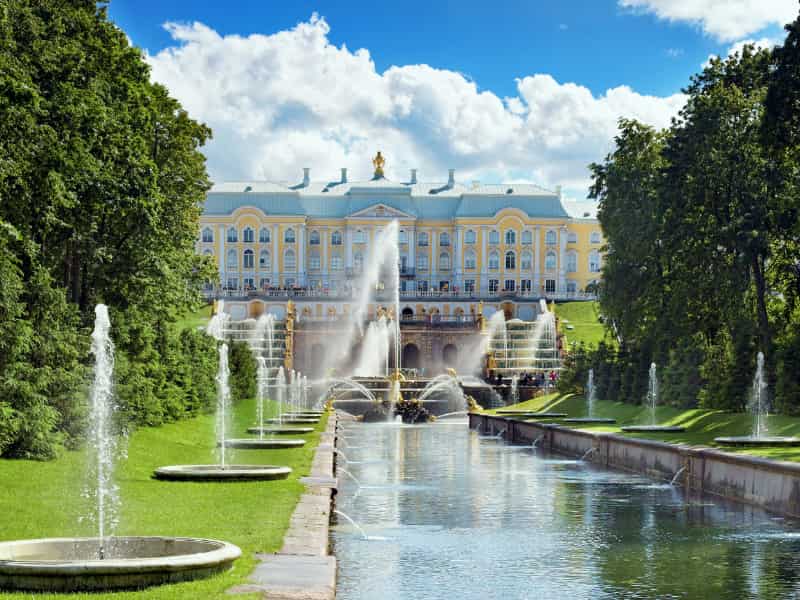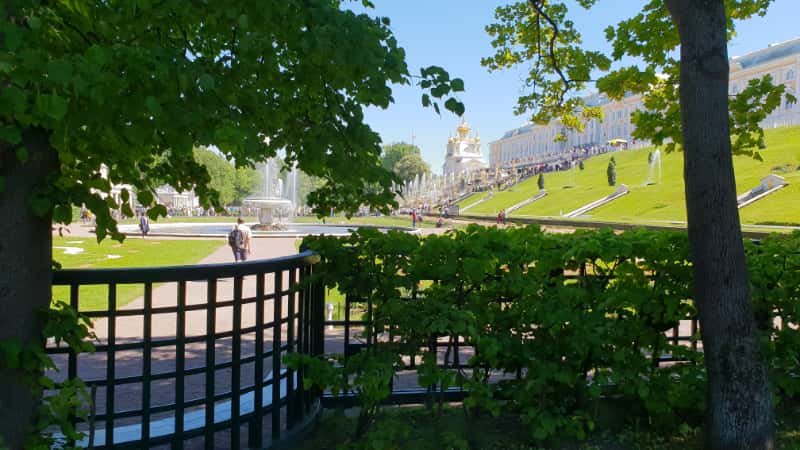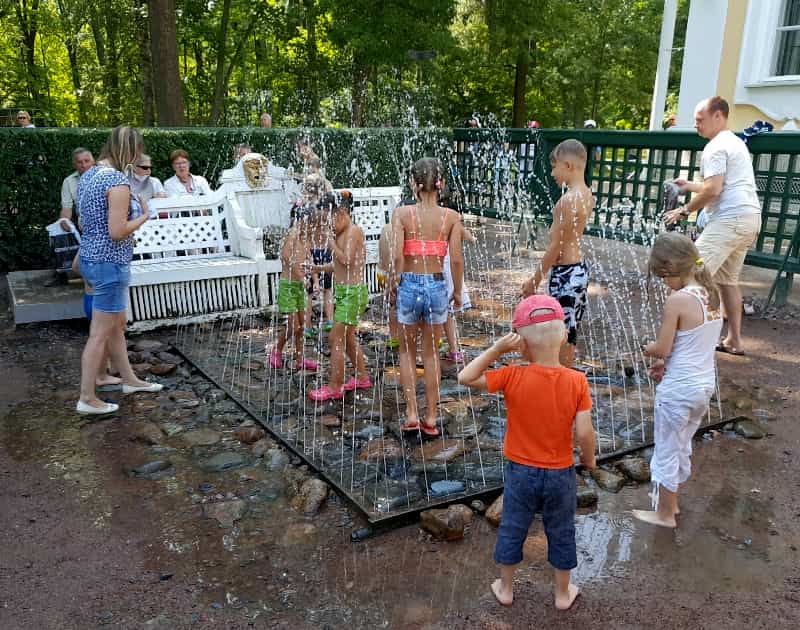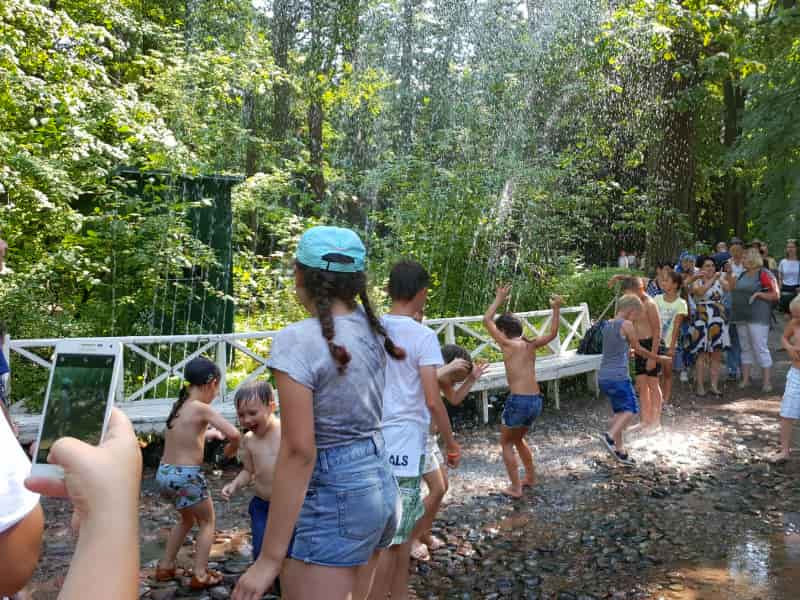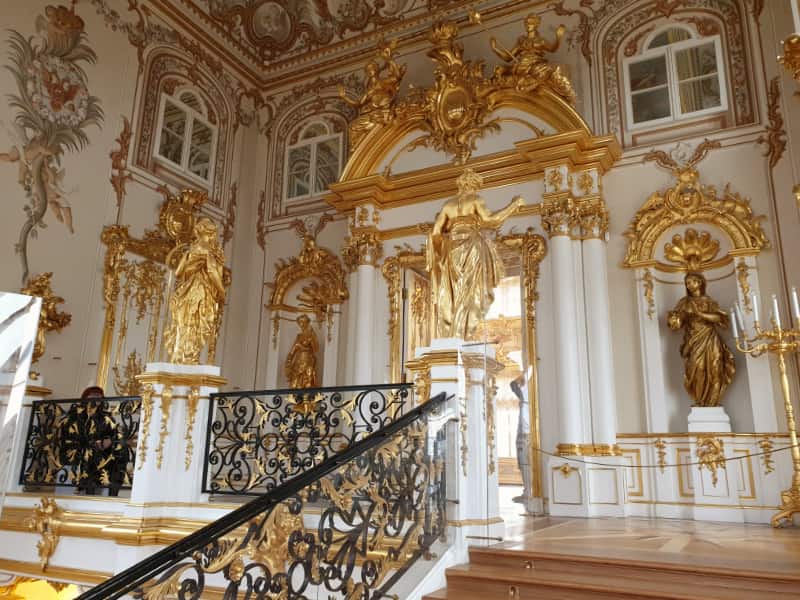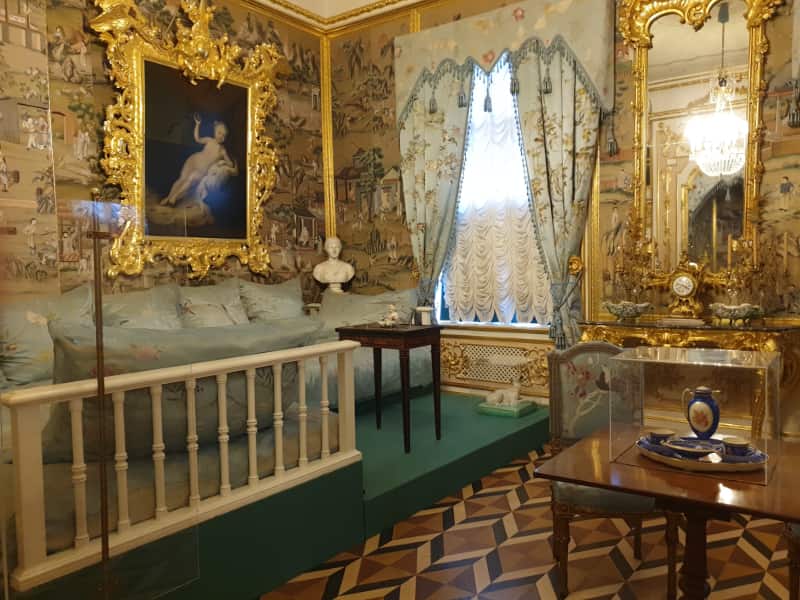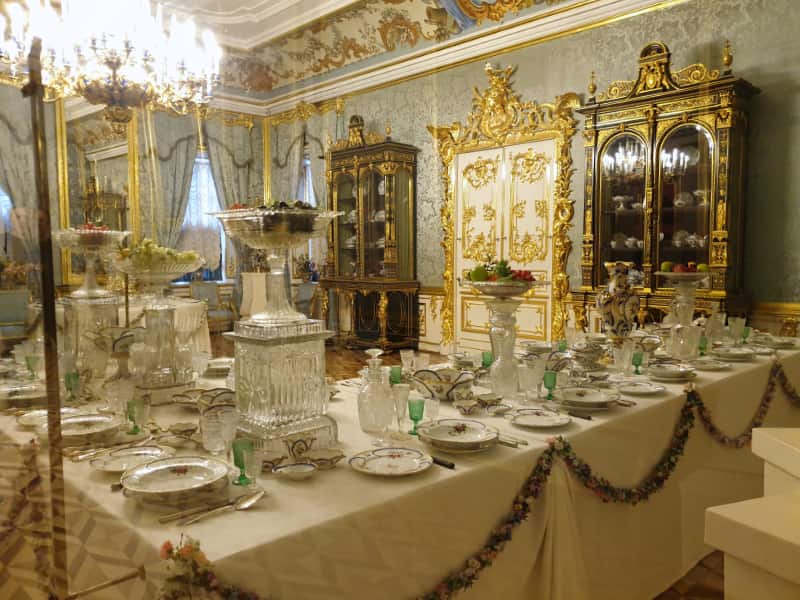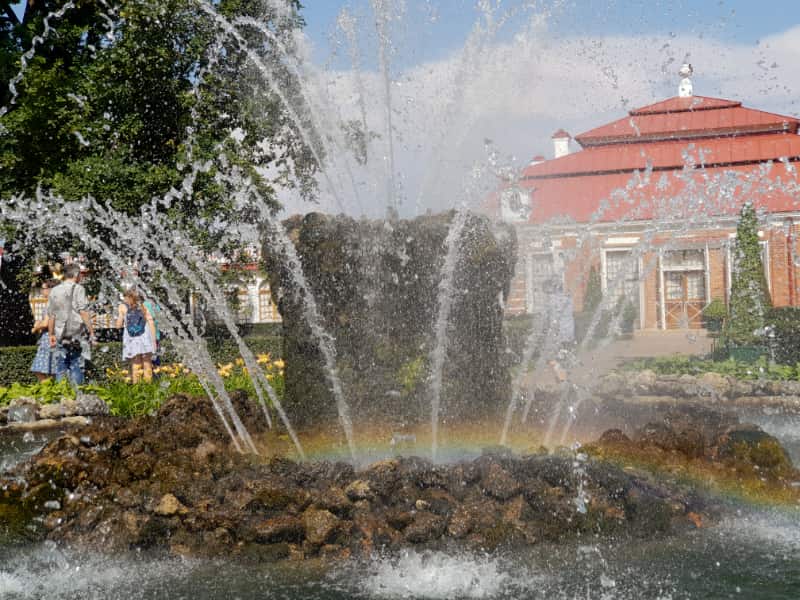One cannot talk about St. Petersburg without mentioning Peterhof Palace & Park ensemble. Peter 1’s fine residence, Peterhof is dominated by water. This residence was Peter’s creation, containing many personal details and items that evoked his spirit and his vision of the future of Russia. The Gulf of Finland and the fountains mirror Peter’s maritime interests. Alexander Benois used to say: “If Versailles is a marvelous dwelling for a ruler of the earth, so is Peterhof for a ruler of the waters.”
Today among St. Petersburg museums Peterhof Palace ensemble occupies the foremost place. No trip to our city is complete without a visit to this spectacular out-of-town Imperial summer residence.
Peterhof Fountains
Peterhof summer residence is remarkable first of all because of its unique fountain system. 22 km of pipes lead to 150 fountains and 4 big cascades in the park. Altogether the fountains and cascades count two and a half thousand individual jets? Each with its own smaller pipe.
Peterhof fountains are all sorts of curious shapes and fantasies: triton and lion fountains, dragon fountains and fish-tailed boys blowing sprays of water through conches. There’s the Pyramid fountain, that looks like a water obelisk created with 500 water spurts rising in seven tiers. There are the marble Roman fountains that repeat the ones in St. Peter’s Square in Vatican. The so-called Menager or Economical fountains look simpler but derive their name from their cunningly designed jets, which send a plume of water high in the air. It looks impressive but is in fact hollow, saving water consumption. Then there are Peterhof’s famous trick fountains which look like umbrellas, trees or benches, but which soak the unwary visitor who approaches too close.
Museum’s website
Peterhof Museum-preserve
All these had been created by fountain masters over the course of several centuries. Up till nowadays, as ever, the whole Peterhof fountain system works without any pumping or electricity. The water to the fountains is fed by gravity. The height of the water spurts is regulated through the diameter of spray nozzles.
It’s possible to see how the fountain system operates. One of the most interesting and unusual museums of Peterhof are Grottos of the Grand Cascade. One can actually go behind the main cascade of Peterhof to see the gravity conduit, water lines and pipes. The development of fountain system is shown not only through old pictures and photos, but also through pipes and decorative elements referring to different periods of time. Besides two trick fountains – Table and Curtain – tell us about Peter the Great’s habits and sense of humour.
Peterhof Palace through History
All this beauty and ingenious work during its 300 years of history went through the whole cycles of destruction and danger, rising again like a phoenix from the ashes.
Peterhof residence was cherished by the ostentatious tsars as a symbol of power and triumph of Russia. Certainly it was not built in one year. The town of parks, palaces and fountains embraces several epochs of Russia’s artistic development. It’s a chronicle of Russian landscape gardening.
After the 1917 revolution, Peterhof Palace followed the fate of some other residences. It was open as a museum. In early Soviet days people wanted to enjoy a taste of the extraordinary luxury the tsars had permitted themselves. Some Romanov palaces were converted wholesale into orphanages, rest homes and health resorts. There were similar plans about Peterhof. A flower shop at the Aviary? A restaurant in the Monplaisir Palace? Well, that was quite possible. But there were also propaganda plans – to convert Peterhof into a big sociological museum to illustrate the struggle of the classes down the years. In 1930 even a new English language guidebook to Peterhof was produced. The main idea was to tell the world how the serfs, the guards and servants lived, how countless unknown craftsmen worked.
During WWII, throughout the Siege of Leningrad, this historic museum complex was in the front line. Peterhof Palace was dreadfully damaged. The seaward side of the parks was turned into unrecognizable waste land of broken trees, mud, wreckage and rags, crisscrossed with trenches and barbed wire. After the Nazi retreat, 72000 mines, booby traps and unexploded shells were lifted from the park. Unbelievable efforts of restorers, museum and fountain workers gave amazing results. On June 17th, 1945, barely a month after the end of war, it was possible to reopen the Lower Park at Peterhof to public. Of course it still looked empty, no trees, and the fountains didn’t play, but it was possible to recognize the former geometry of the park. It was a day of great joy and celebration. It was but the first step in the long process of conservation and restoration that took over half a century. Three years after that day, in September 1948, the Soviet government decided that Peterhof would be restored…
Peterhof Tour
Today, as a century ago, the visitors to Peterhof enjoy the full beauty of the maritime residence. The vast museum complex offers a great choice of places to visit and activities to do, so a Peterhof tour can be as short as a couple of hours and as long as a few days. You can keep returning to Peterhof and see new things each visit.
Peterhof tour can be a pure outdoors one of the fountains and parks. There are electric cars that take visitors across the Lower Park and electric trains that offer a ride from the Lower Park to Alexandria gardens.
Those keen on the Royal history, of course will enjoy a visit to the Grand Palace, but besides that will be intrigued to see the Royal Kitchens and Baths (something “behind the curtain”, concealed from the eyes of public). Monplaisir and Marli palaces of Peter 1 are full of the period pieces bringing back early 18th century atmosphere and tell us more about the personality of the most extraordinary Russian tsar. Museum dedicated to Royal Entertainment shows us yet a different side of life in the 18th and 19th centuries: theatres, concerts, parties, gambling, hunting, holidays and fireworks – whatever our imagination tells us about the pastimes of the older days, you will be able to experience in this interactive museum.
Special Storeroom in Peterhof is like Special Treasury of the Hermitage. It shows some personal belongings of the Russian tsars. Since tsars surrounded themselves with excessively lavish beauty, each thing exhibited is a masterpiece of jewelry art. Precious goblets, elegant snuffboxes, exquisite silverware, elaborate Faberge items, rings, brooches, necklaces, blessing icons, dresses of courtiers embroidered with gems – all these treasures are placed in the 18th century environment, when the little Block under the Coats of Arms served as private quarters of Catherine the Great.
Visit the Peterhof with comfort.
It’s easy to arrange a visit to Peterhof Palace and Fountain complex!

